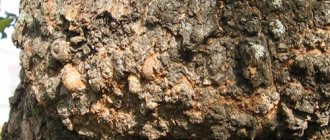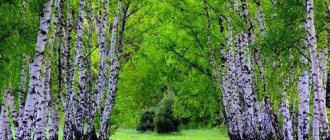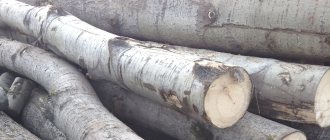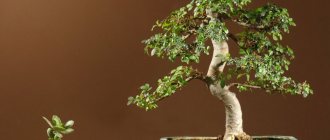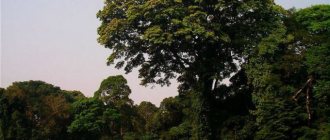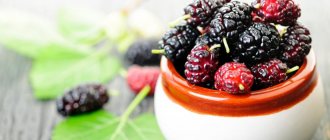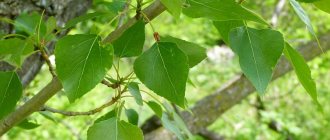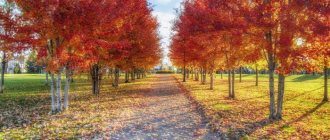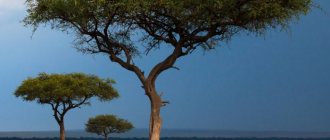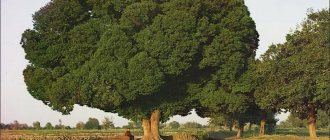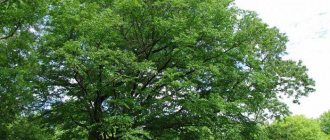Karelian birch is quite rare, which may be why its unusual wood is so highly valued. This tree is a variety of silver birch and, despite its name, grows not only in Karelia, but also in the Vladimir, Kaluga, Kostroma regions, in the Scandinavian region, the Baltic states, Belarus and some other European countries.
It has been noted that a rare species of birch most often grows near small villages and hamlets, that is, in places where human influence is clearly present.
Description of the Karelian birch tree
- Karelian birch belongs to the Berezov family. This is a deciduous tree. Sometimes it can take the form of a bush. An adult tree is smaller in size than silver birch and is about 6 meters in height. It can reach a maximum height of 18-20 m. The trunk diameter is about 30-40 cm.
- Depressions, nodes, and thickenings form on the trunks, as can be seen in the photo of the Karelian birch tree. The trunks acquire the characteristics characteristic of the “Karelka” only at the 8th year. Thanks to its characteristic relief, the Karelian birch received its popular name - “warty”.
- The bark of young plants is brown, while that of adults is white. Birch bark peels off easily.
- The crown of the Karelian birch is rare. The alternate, small, heart-shaped leaves with a finely toothed edge are located on thin brown branches.
- "Karelka" is a wind-pollinated monoecious plant. Small flowers are collected in inflorescences - earrings. Underdeveloped male inflorescences overwinter on the tree, while female inflorescences develop from buds in the spring. Flowering occurs in late April - early May, before the leaves appear.
- The seeds are small and dispersed by the wind.
Literature
- Sokolov N. O.
Karelian birch. - Petrozavodsk, 1950. - Lyubavskaya A. Ya
. Selection and breeding of Karelian birch. - M., 1966. - Lyubavskaya A. Ya
. Karelian birch. - M., 1978. - 157 p. - Andreev K. A.
Rare trees of Karelia. - Petrozavodsk, 1981. - Ermakov V.I.
Mechanisms of adaptation of birch to the conditions of the North. - L.: Nauka, 1986. - 144 p. - Ermakov V.I., Vetchinnikova L.V., Bumagina Z.D.
Results of studies of the nature of Karelian birch. — Dep. in VINITI 02.21.90 N1068-B90, 1990. - 43 p. - Vetchinnikova L.V.
Clonal micropropagation of Karelian birch breeding material // Scientific. basics of selection of woody plants of the North. - Petrozavodsk: Karelian Research Center RAS, 1998. - pp. 73-87. - Vetchinnikova L.V.
Karelian birch: habitat, diversity, protection and reproduction prospects // Tr. KarRC RAS. - V. 6. - Petrozavodsk, 2004. - Vetchinnikova L.V.
Karelian birch and other rare representatives of the genus
Betula
L. - M., 2005. - 268 p., ill. - Nikolaeva N. N., Novitskaya L. L.
[www.krc.karelia.ru/publ.php?id=m397&plang=r Structural features of the assimilation apparatus and the formation of anomalous wood of Karelian birch] // Forestry. - No. 1. - 2007. - P. 70-73.
Living conditions
Grows in northern Europe, in places in Central Europe, Scandinavian countries, Belarus, Ukraine. In Russia in the north of the Karelian Territory, Leningrad, Kaluga regions.
Grows singly or in small groups. Does not form groves. It is frost-resistant and easily adapts to harsh conditions. Not picky about soil types. But “Karelka” is a light-loving plant, so it experiences great difficulties in the shade of other trees.
Historical facts
Under the names of birch, svil and naplava, this type of tree has been known and popular in Russia since the 18th century. Valuable wood was considered as a means of payment, along with money .
The name “Karelian” was officially received by the plant in 1857. There is reason to classify this variety as a relict tree that has lived on the lands of the modern Leningrad region and other territories since the end of the Ice Age. In Karelia, natural populations of the tree were endangered during the Great Patriotic War, when the northern territories were under occupation. The birch was actively cut down; it did not have time to recover on its own, which is why it is currently considered a rare plant.
Seed propagation
Growing Karelian birch from seeds is most often done in nurseries. Pollination occurs under supervision to obtain high-quality seed material. Despite this, the results of seed propagation are unpredictable. Only a third of the seedlings will have “karelka” properties. The characteristic features of wood appear only in the 8th year, or may not appear at all.
How to grow a Karelian birch tree from seeds? It is important to consider that the longer the seeds are stored, the lower their germination rate. Fresh seeds are the most suitable for sowing.
Before planting, the seeds are subjected to stratification for 3 months. And they are sown in open ground to a depth of no more than 1.5 cm. Then the seedlings are planted.
Plants obtained from seeds with “Karelka” characteristics are somewhat stunted in growth, but compensate for the lack of growth with the width of the trunk. Later growth levels off.
Lifespan of a Karelian
The lifespan of the Karelian tree is short, it is half that of an ordinary birch. At the age of 50-60 years, the growth and development of Karelian birch ends, the branches dry out, and heart rot develops in the patterned wood.
Karelka is often affected by frostbites during severe frosts. Long longitudinal cracks form on the bark and in the upper layers of wood. Fungi and microbes enter these cracks, which subsequently destroy the wood.
Currently, all natural stands of Karelian birch in Karelia are mature and over-mature. The gene pool of Karelian birch is weakened and is being renewed slowly. Nature can no longer cope with its restoration. Currently, human help is required to preserve this unique tree.
Vegetative propagation
Karelian birch successfully reproduces by layering and shoots. For layering, branches of mature plants that are inclined to the ground or branches that are subject to cutting are used. Sometimes trees sprout new growth. Young annual shoots are better suited for propagation.
Another effective method of vegetative propagation is grafting. Young green shoots of Karelian birch are grafted either onto old stumps or onto young silver birch plants. There are two methods of grafting under the bark or into the split.
Since the 90s of the last century, cloned micropropagation has been considered the most promising method of reproduction.
As a result of this method of reproduction in laboratory conditions, high-quality genetically homogeneous material is obtained, which inherits the properties of the mother plant. This method helps to obtain completely healthy seedlings, free from diseases and more resistant to diseases and pests.
Unique wood
As for the unique wood texture, debate continues to this day. It is interesting that Karelian birch can show unusual qualities not from the first years of life, but after several decades. As a result of observations, scientists found that only 5-7% of seeds will produce a tree with valuable traits of a rare variety. The rest will grow into a common birch tree. Only an experienced forester can identify individual specimens of a valuable species among many ordinary birches, focusing on the subtle thickening of the branches and trunk.
Karelian birch is a real mystery of nature, which, being the subject of many years of research, has not been fully studied. Therefore, it is not entirely clear what its true origin is; there are only hypotheses. Some scientists are inclined to believe that viral diseases affect the plant; others blame a genetic mutation; still others talk about the influence of climatic and environmental factors in the growth zone, as well as cosmic radiation.
Planting and caring for seedlings
The cultivation of “Karelka” is carried out mainly in nurseries and nature reserves to preserve the valuable variety of birch. Growing a tree on your own is not an easy task. How to plant a Karelian birch tree so that it takes root well?
It is better to get down to business in spring or autumn. First of all, you need to make the right choice of planting site for the tree. This should be an open sunny place. When planting in groups, it is recommended to provide a distance between seedlings of about 4 meters.
Make a hole larger than the plant's root system. Place humus or rotted compost at the bottom of the hole, add urea. At the end of planting, water the seedlings generously.
Other agrotechnical techniques that will be required for growing seedlings:
- Regular watering. It is important not to let the soil dry out.
- Mulching the root circle with peat, sawdust, pine needles.
- Application of mineral fertilizers during the growing season.
- Weeding during the first year.
- Sanitary pruning in the spring before sap flow begins.
- The cut is covered with garden varnish.
Karelian birch is a frost-resistant plant, so there is no need to cover the seedlings for the winter.
Application
Karelian birch is valued for its unusual wood properties, largely due to its twisted pattern and technical characteristics. It is considered one of the strongest and hardest wood species. Therefore, the products are perfectly held by fastening mechanisms. Wood responds gratefully to polishing and varnishing.
Even in the last century, furniture was made from it. Now that mass logging is prohibited, veneer is used in furniture production. Products made from “karelka” look luxurious: boxes, chess sets, knife handles, musical instruments.
Breed value
In this it is similar to expensive tropical varieties. The excellent characteristics that Karelian birch has are the properties inherent in its wood in the form of increased curling and growths.
In addition, it is almost impossible to grow it artificially, so there are very few nurseries with its plantings. Pedigree is not determined immediately, but arises under unknown influences (scientists have not yet established the cause) somewhere in the 10-15th year of a tree’s life. Therefore, it is truly of great value.
